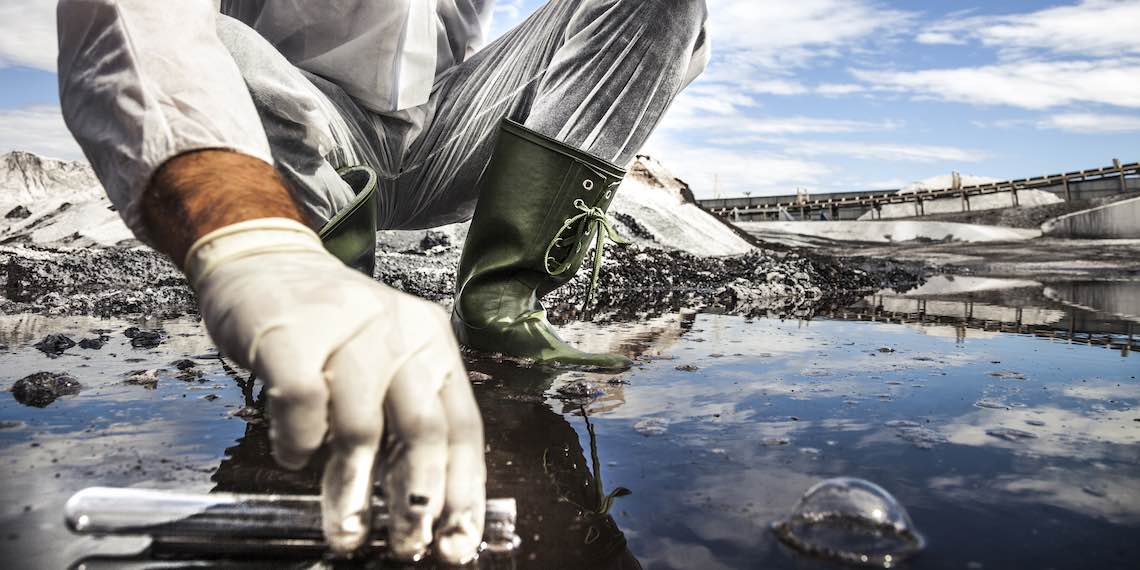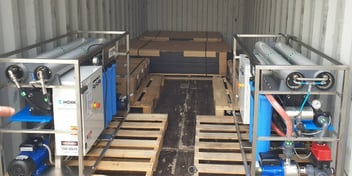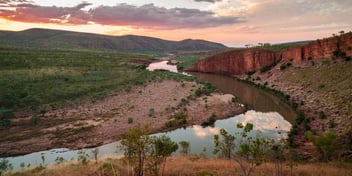Maximising the value of water research investment

As the Australian water community strives to find solutions for increasingly complex challenges, including water security and climate change mitigation and adaptation, successful and value-packed research is now more important than ever.
In response to declining investment in research by water organisations, Water Research Australia (WaterRA) embarked on a project to help demonstrate how to maximise value generated from investment in research, through realising benefits through all aspects of a business at all stages of a project.
Now in Phase 3, the Value of Research Project has determined a successful pathway for how to value research undertakings, including outcomes and outputs, that relies on a combination of evaluation processes and organisational culture.
WaterRA CEO Karen Rouse said investment in research couldn't be more urgent in terms of the challenges the water sector is facing and the pathway to innovation that research provides.
“Research has always been important and now more than ever — and particularly in terms of bolstering innovation. Research helps us understand present and future challenges, and how we are able to either avoid or prepare for those challenges effectively,” she said.
“The overall objective of the project is quite simple, but big. It's to maximise the value of water industry investment in research. And it came about largely in response to falling levels of investment in water research in Australia, both in absolute terms, and relative to other sectors.
“One of the key things that can be done about this trend away from research investment is to demonstrate that the research we do generates significant value — that our estimates and descriptions are credible, and show the value we predicted is achieved."
Investigating investment challenges
Phase 1 of the Value of Research Project began with extensive industry consultation that collected insights into some of the hurdles water organisations are facing in their approach to research investment, Rouse said.
“We began by talking to our members to learn what approaches they used, how well they worked, and what their most pressing challenges were,” she said.
“We discovered that there is an appetite within the water sector for a consistent research investment pathway that could be used by all. There was also a desire for more information and guidance in terms of techniques for actual valuation, including benefits assessments.
“Following this industry consultation, we moved on to developing the Good Practice Guide.”
The Good Practice Guide was then distilled in the Good Practice Essentials Guide, which provides clear guidance and questions that help drive and measure value creation and impact throughout the research lifecycle.
Rouse said the guide is organised around the research life cycle, recognising that the research delivery process is circular as opposed to linear.
“The guide starts from initial ideation, when a problem tractable by research is identified, through to when outputs are delivered and utilised, and the benefits of research are realised,” she said.
“Importantly, the guide recognises that throughout the cycle stakeholder engagement is critical, but also that benefits can be realised at every phase of the cycle, not just at the end.”
Rouse said it’s important for water businesses to understand that opportunities to derive value from research are possible at any stage of the life cycle, especially if stakeholders are engaged at every step.
“You can get benefits from day one if stakeholders are included in the process, simply by working alongside representatives from other organisations, because you may find that answers to your research question already exists,” she said.
“This can help in terms of refining the direction of the research pathway, which is very valuable. So, if you go looking for value, you'll find it at every phase of the life cycle, even before the research is underway. And the guide helps uncover this value.”
Rouse said the good practices are a series of actions that increase the likelihood of value discovery: “It's about identifying additional value creation opportunities”.
“We may start out with a very narrow view of what we think the value of our research is, but by working with stakeholders and following the principles, organisations can discover that there's more value there to be had,” she said.
Credibility and strategic alignment
Aside from uncovering extra pockets of value, Rouse said the guide will also enable organisations to demonstrate and benchmark the extent to which their research management processes achieve value, which is a boon for boosting the credibility of research initiatives.
“One of the great things about the guide is its ability to help organisations build business cases for important research. The challenge of capturing and valuing the benefits of research is longstanding,” she said.
“There is a disparate range of approaches and many of them generate large estimates of value, which look good on paper but fail to convince decision makers. They're just not seen as tangible, credible estimates.
“But we now have a valuation pathway that’s been agreed upon and accepted across the water sector, adding an extra layer of credibility to research valuations and benchmarking. It engenders confidence that the value estimates are achievable and the business case is sound.”
Furthermore, Rouse said the continual stakeholder engagement the guide recommends is really important in terms of ensuring research continues to maintain traction across the business, which is all about nurturing healthy and ongoing strategic alignment.
“We know that a key factor of successful research programs that release maximum value is strategic alignment,” she said.
“During our consultation with our industry members, we learned that one of the reasons projects fail is because strategic alignment between the research and the organisation goes missing.
“It slips off the stakeholder’s radar, the strategy changes or, sometimes, the person spearheading the research project leaves the business, creating a disconnect. But, by taking a cyclical approach and ensuring stakeholders engagement at every stage, water businesses are more likely to avoid that strategic misalignment.”
WaterRA is now finishing the final stage of the project, which delivers an online tool that water businesses can use to assess their current practices, and prioritise actions they can take to uncover more value from their research projects.
“The tool will be released later this year, and it will enable organisations to complete a self-assessment via a series of questionnaires,” Rouse said.
“It will help show where their gaps in retrieving value are biggest, and offer guidance on how to move forward to improve outcomes.”


